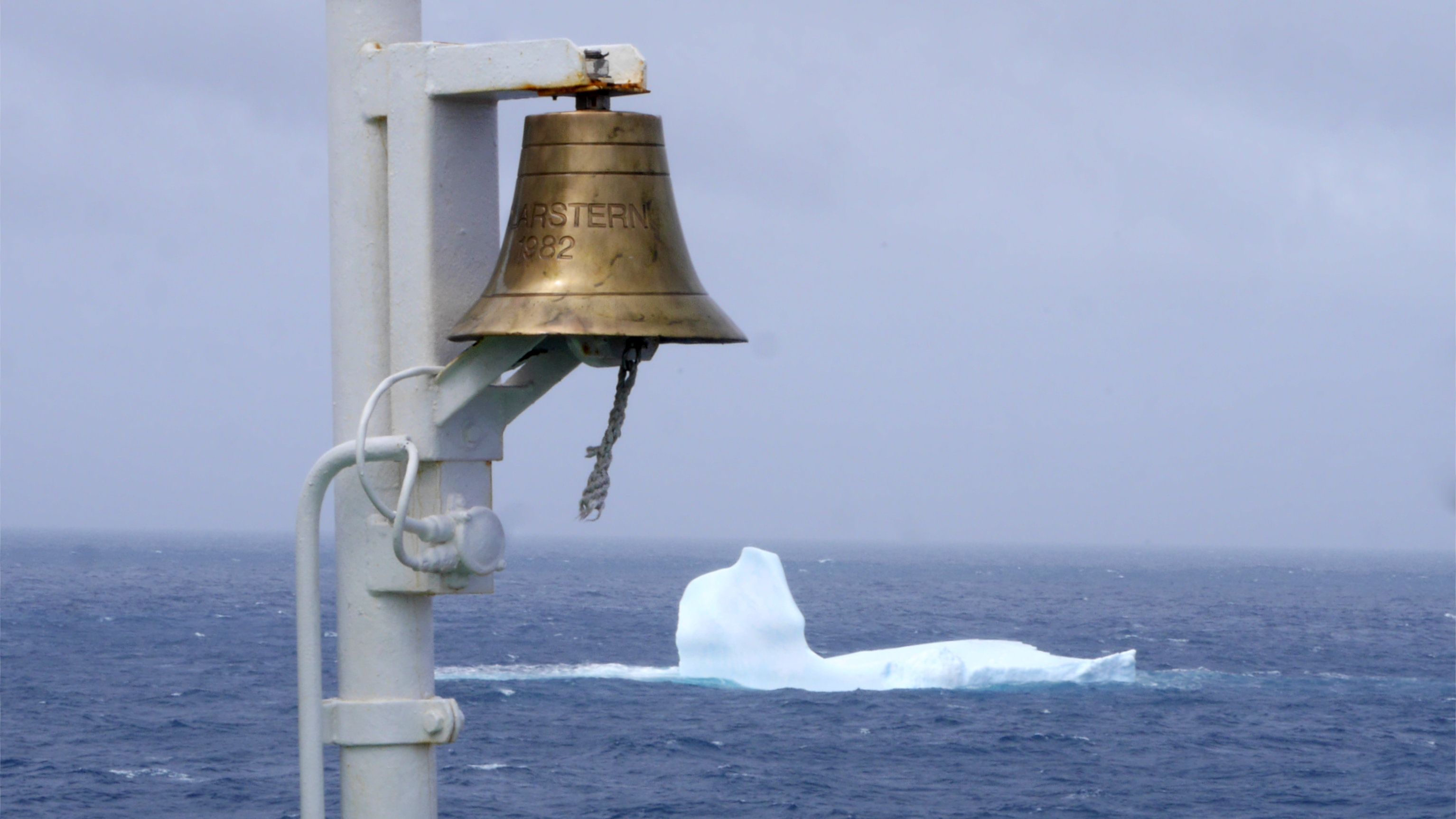
Going south: icebergs, whales and albatrosses
This is part of a series of letters I sent home during my first research expedition, on the German icebreaker Polarstern.
You can start at the beginning here.
Hello again, this time from the Southern Ocean! We saw our first ice this morning, in the shape of three or four large white irregular lumps floating low in the choppy water, and surrounded by a flock of small seabirds. One of the bachelor’s students on board (lucky!), came running down to the lunch queue shouting “Eisberge! Eisberge!”, and naturally I forgot about lunch, grabbed my camera, and rushed to the “Peildeck” (Navigation deck, from what I can gather and without interwebs to look it up). When I got there, it seemed we were headed straight for one of them, but thankfully the bridge had got it right and we passed between two of them. (We’ve got enough lifeboats for all of us, anyway…)
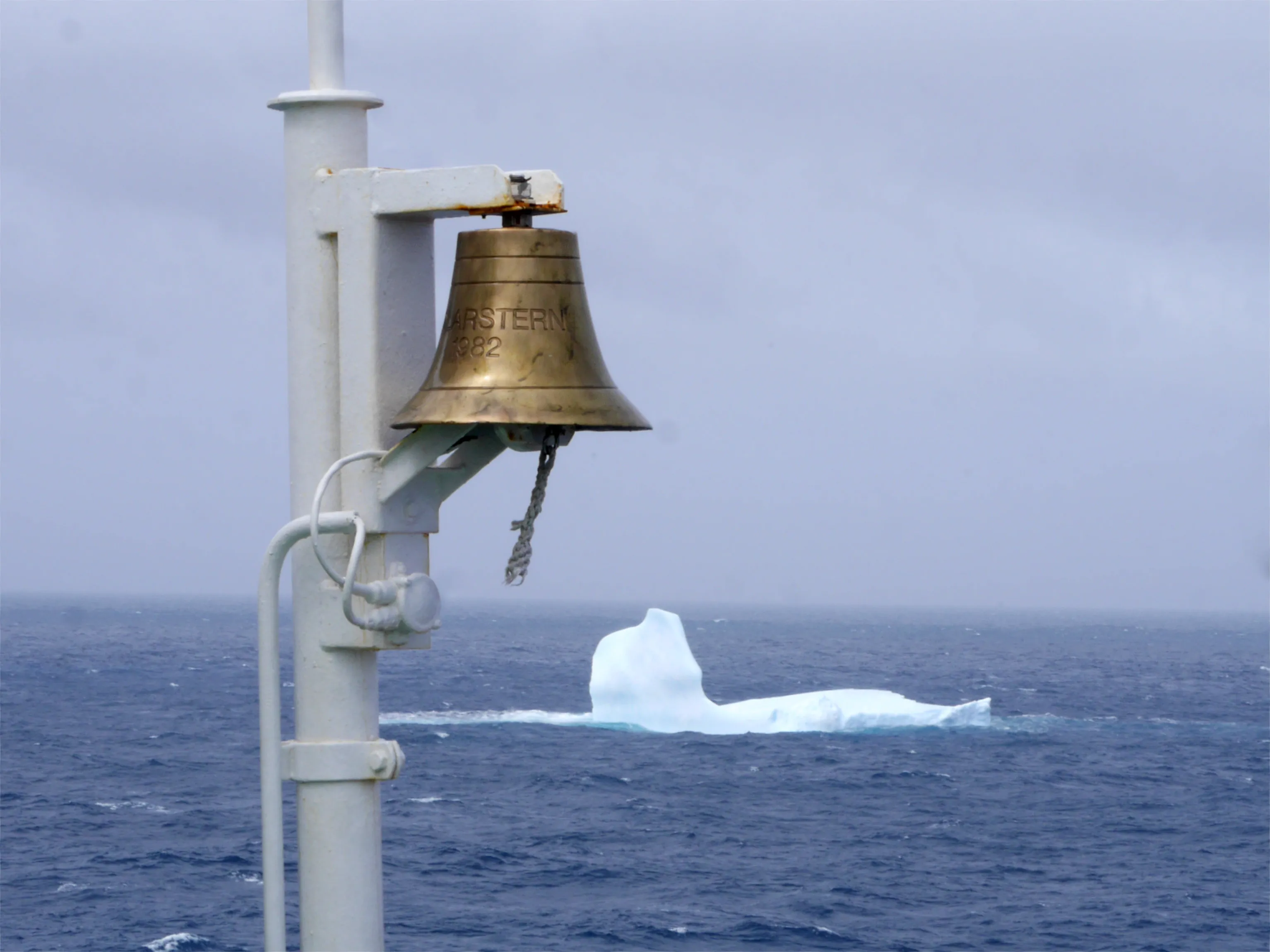
Whether or not we’re actually in the Southern Ocean yet was the subject of a lively debate on board. For most (including me), the most sensible definition for the Southern Ocean is based on the polar front — that is, the northernmost extent of the cold, dense, Antarctic water masses. Since this varies though, politicians can’t write nice neat laws, so they tend to go with various definitions involving lines of latitude and joining southernmost points of land: the International Hydrographic Organization likes “everything south of 60°S”, the UK hydrographic office favours everything below 55°S, The Australians have their own unique definition, and National Geographic doesn’t recognise it at all. But for the scientists on board, anything other than the polar front definition has no basis in reality, and we’re a pragmatic bunch. If there are icebergs around, you can’t really argue.
We’ve had quite a calm passage through the “roaring forties” (40–50° latitude), but I think the “screaming fifties” are going to be a bit worse. Still not bad, but we’re expecting force 6 to 7 and occasionally gale force 8 winds, and significant wave heights of 4.5–5.5 m. Luckily I’ve nearly got my sea legs and most of the time I’m ok, even when the deck is tilting 6° one way and then the other.
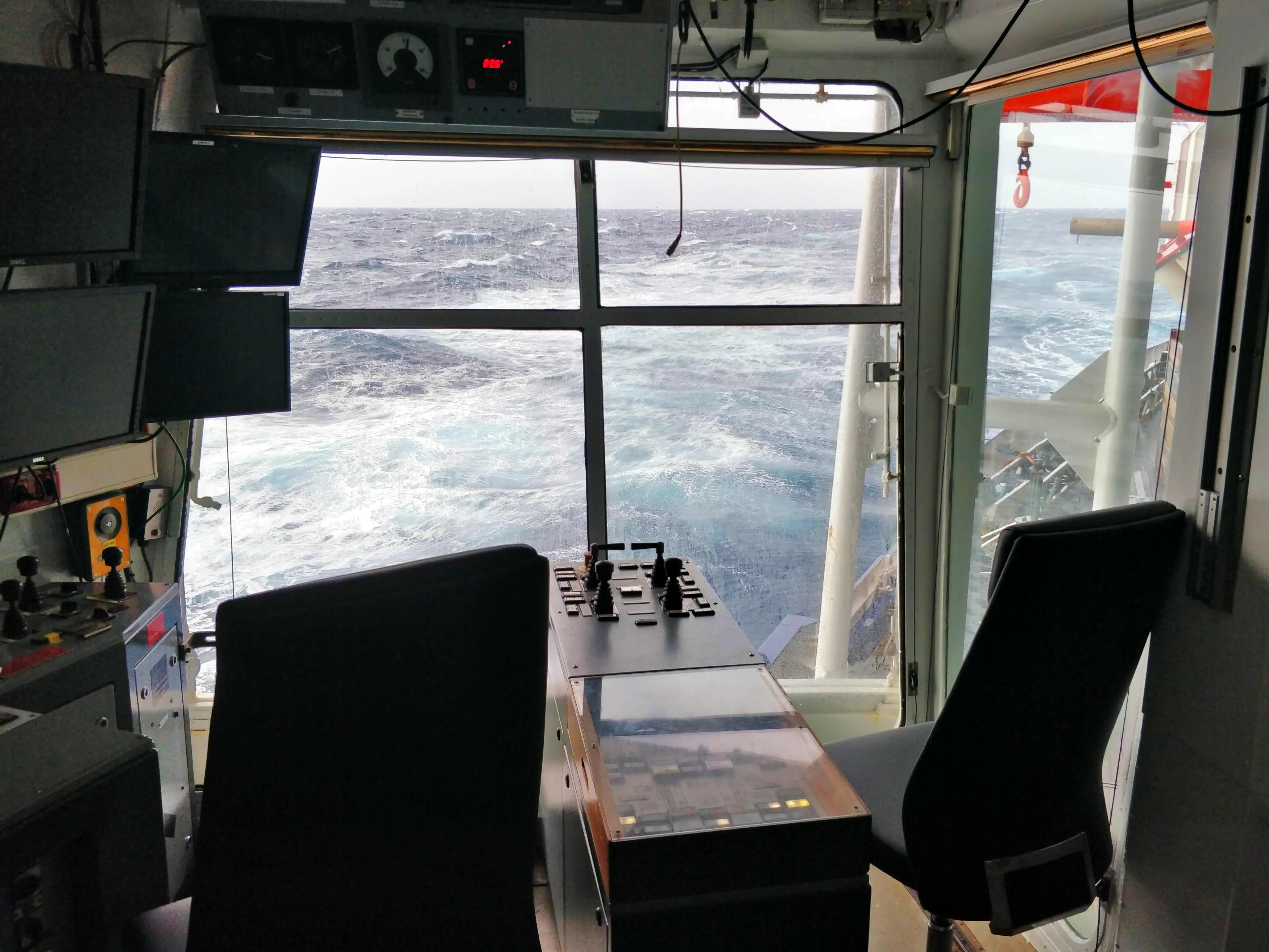
We’re travelling at a stately ten knots (about 12 mph) but given that we’re doing it all day without stopping we’re covering quite a lot of ground. And the ground we are covering is about four kilometres below us, give or take a kilometre — it would take a good hour to walk to the bottom! Our bathymetry team has already started work, mapping the ocean floor below us as we go over it: we’re taking a slightly longer route so that our course is just offset from anyone else’s route before us, though we’ve just entered the Exclusive Economic Zone of Bouvet Island, a dependency of Norway and the most remote island in the world, and we’ve had to stop mapping as we don’t have a licence from Norway to do so.
Yesterday we passed the final round of covid tests and could officially continue! The Australian ship we were going to coordinate with (the R.V. Investigator) has unfortunately had to turn back and cancel their cruise because they did detect cases on board. They are the latest to succumb, after the R.R.S. Discovery in Southampton, the JOIDES Resolution in Cape Town, and seemingly many more besides. But I think none of them have done as thorough a quarantine as we have — usually a week, if anything. Our German doctor and quarantine supervisor Eberhard has done a good job, probably due in no small part to his enthusiastic nasopharyngeal swabbing every other day. It seems we and the R.R.S. Sir David Attenborough (a.k.a “Boaty McBoatface”) are the only ships down here. Actually, I think the Americans did a crazy three-week multi-stage quarantine so I imagine they’ll be ok too.
In the last few days, when the weather has allowed it, I’ve been scanning the horizon from the Peildeck, often with the Marine Mammal Observers, our professional whale watchers (everybody’s jealous of their job). And more often than not my patience has been rewarded, too: I’ve seen many spouts of spray as whales surface a long way off (apparently they’re called “blows”), and occasionally we’ve seen the fins or even the backs of the whales (though no tails or breaching yet…). So far we’ve seen Fin, Pilot, Sperm, Sei, and Humpback whales — or at least the professionals have identified them, I can’t tell the difference yet.
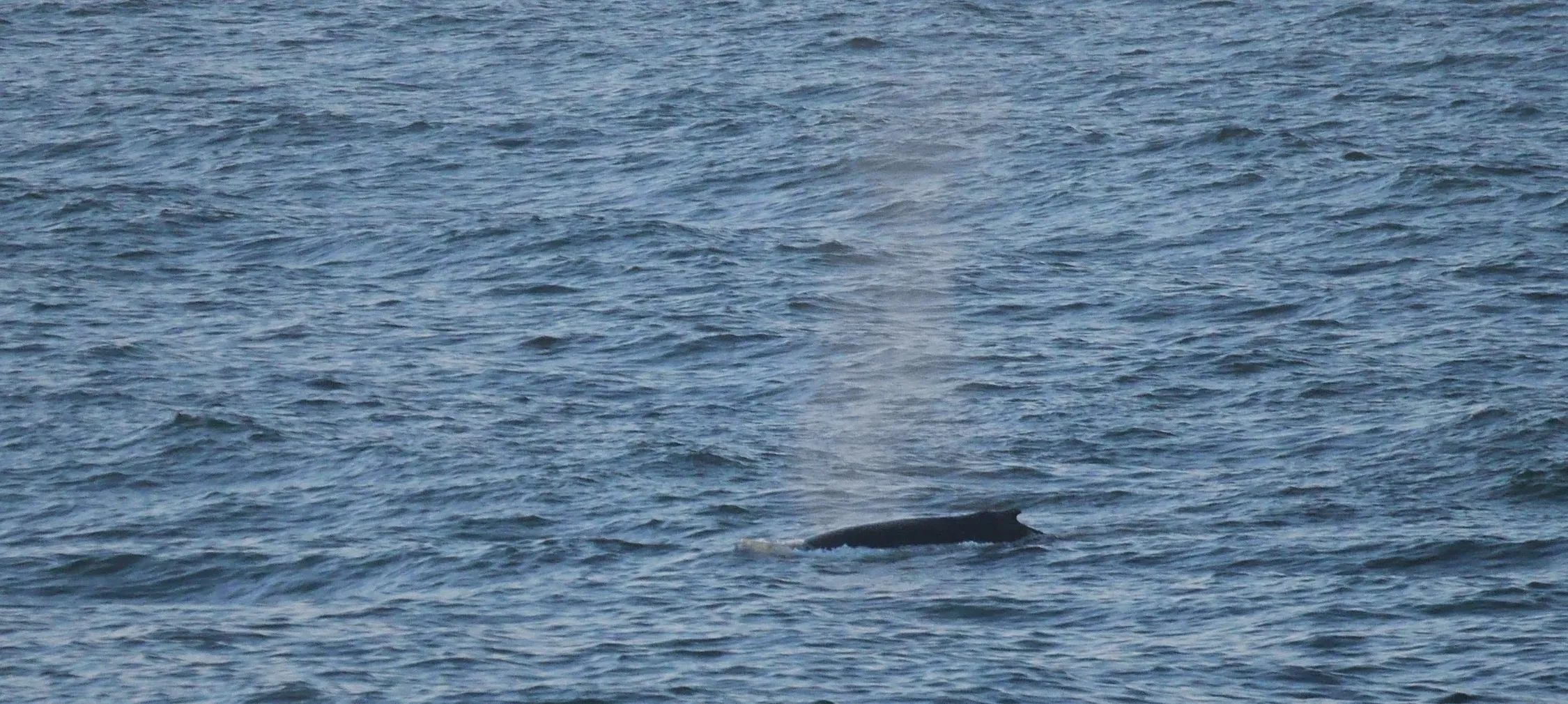
One evening when it was still just about warm enough, Matt (my cabin mate) and I went up to the Peildeck after dinner with the remnants of his bottle of red from the previous night and joined a good-sized group of other young’uns — mostly students and some of the overwinterers. As dusk fell we chatted and looked at the sea, and I kept spotting blows that nobody else (including the MMOs) could see, very far off in a few different directions. Eventually, the MMOs agreed I wasn’t making it up and said I had the best spotting record on the boat and that I was better than them. I choose to believe their kind lies.
And then we all saw three sperm whales very close by on our port side. They didn’t do much other than blow a few times and lie low in the water (no flukes, fins, or diving) but it was still impressive. After that, we saw an albatross gliding over the water, and our biology student and unofficial ornithologist got excited when he spotted a Wilson’s Storm Petrel.
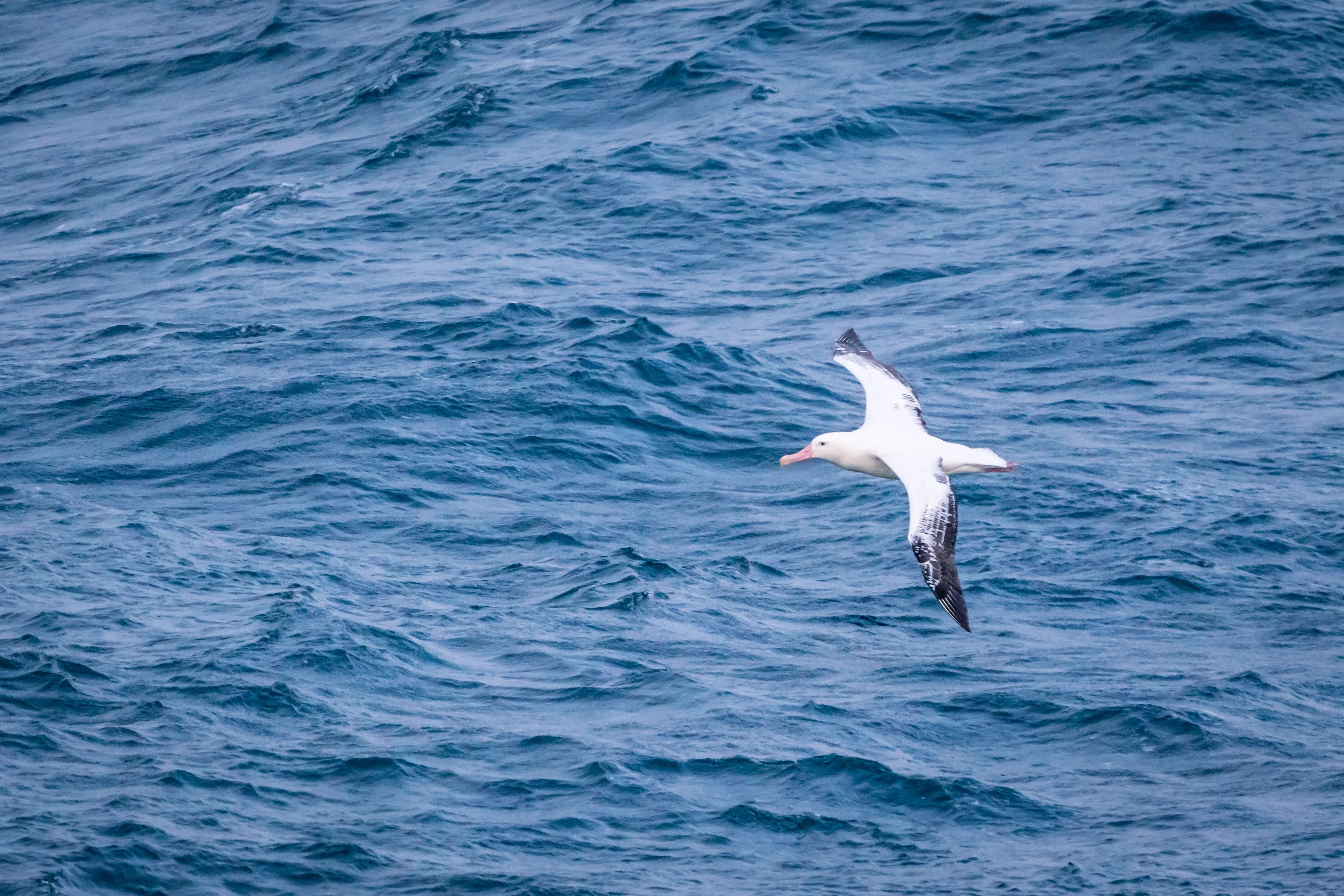
Then we watched as the sun set and then the Southern Cross and the Milky Way gradually became visible. I also saw a shooting star with a green tinge, Orion (upside-down), and an Iridium flare (a sudden bright reflection of the sun off the triangular Iridium satellites that we use to communicate). This last was so bright that it reflected off the water’s surface even in the twilight.
By this point, our circle had disbanded and a few of us were joined by the Chief Scientist and his lieutenants. We had some fun conversations and everybody was interested in the stars as they came out — I hadn’t realised, but it’s not often on an Antarctic cruise that one gets to see the Southern Cross, given that you only get a few dark nights before the twenty-four-hour daylight, and they’re often marred by clouds.
So far, other than trying to spot wildlife, we haven’t had much to do. We geologists can’t do anything while we’re just transiting so we’re mostly just chatting and drinking. All meals are very sociable affairs because we don’t get a choice where we sit so I’m getting to know everyone quite quickly.
That’s all for now, I’ll probably write again when we’re past Bouvet Island and much closer to Antarctica proper.